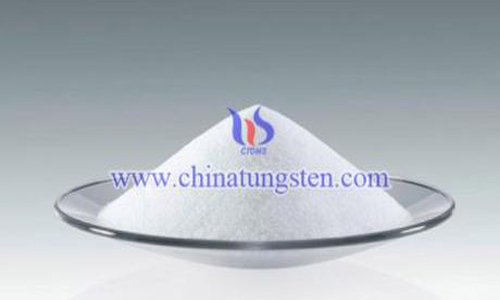Mesoporous Tungstate Preparation
- Details
- Category: Tungsten Information
- Published on Thursday, 08 August 2019 22:51
At present, indoor and outdoor environmental pollution has become increasingly prominent. Photocatalytic materials can use sunlight to degrade various gas-phase and liquid-phase pollutants harmful to the environment and mineralize them into harmless water and carbon dioxide. Photocatalytic method is a very economical, convenient and feasible method to purify the environment, and its related research has attracted great attention. However, there are two problems in current photocatalytic materials, one is poor visible light response, the other is low efficiency.

Tungstate is one of the most efficient photocatalytic materials, but most of the traditional photocatalytic materials are synthesized by solid phase method. The specific surface area of the materials is small and the photocatalytic efficiency is low. Tungstic acid nanomaterials with large specific surface area can be obtained by sol-gel and hydrothermal methods, but nanomaterials are difficult to be immobilized and recycled, and are not practical. More importantly, nanomaterials are easy to enter the human body, resulting in nano-physiological toxicity. Therefore, it is particularly important to study tungstate loaded on mesoporous materials.
Taking bismuth tungstate as an example, the preparation steps of mesoporous tungstate are as follows:
The 0.004 mol ammonium tungstate was dissolved in 100 ml water, and the clarified liquid was obtained by accelerated dissolution in ultrasound. Bismuth nitrate of 0.004 mol was dissolved in 100 ml acetic acid and stirred until completely dissolved. The two solutions are mixed to form milky-white turbid liquids, and the turbid liquids are stirred and heated to evaporate to obtain solids. The obtained solids were calcined at 200-1000 ℃. Bismuth mesotungstate photocatalytic material was prepared by treating the calcined product with 1M Na2CO3.
During calcination, tungstates accumulate to form supports due to the growth of crystals, thus avoiding the fusion and growth of multi-metal oxide crystals, improving the thermal stability of the mesoporous structure of multi-metal oxide and protecting the mesoporous channels from collapse. The mesoporous bismuth tungstate photocatalytic material 0.5g was evenly laid in a square groove of 4 cm2. The square groove was placed in a sealed container with a volume of 1L. The 5ul formaldehyde solution was injected into the sealed container to form a high concentration of formaldehyde vapor. The reactor was irradiated by xenon lamp source. The formaldehyde was decomposed into water and carbon dioxide, and was sealed. The final degradation rate of formaldehyde was determined by the increase of CO2 in the container. After 20 minutes, the concentration of CO2 increased to 2000 ppm, indicating that significant formaldehyde was degraded. After 60 minutes, the degradation rate of formaldehyde reached 92%.
- Tungsten Oxide Manufacturer & Supplier, Chinatungsten Online: www.tungsten-oxide.com
- Tungsten News & Prices of China Tungsten Industry Association: www.ctia.com.cn
- Molybdenum News & Price: news.molybdenum.com.cn
- Tel.: 86 592 5129696; Fax: 86 592 5129797; Email: sales@chinatungsten.com



 sales@chinatungsten.com
sales@chinatungsten.com